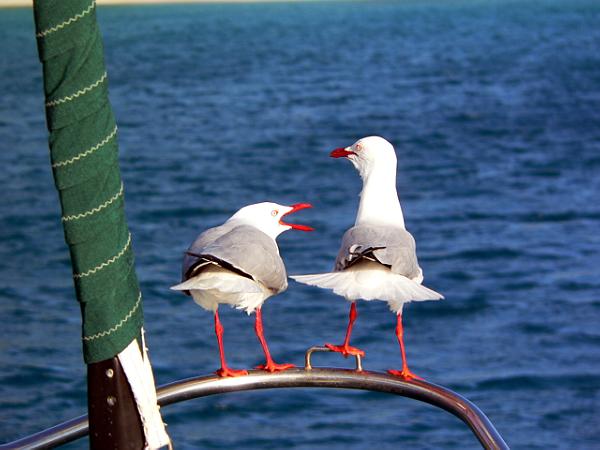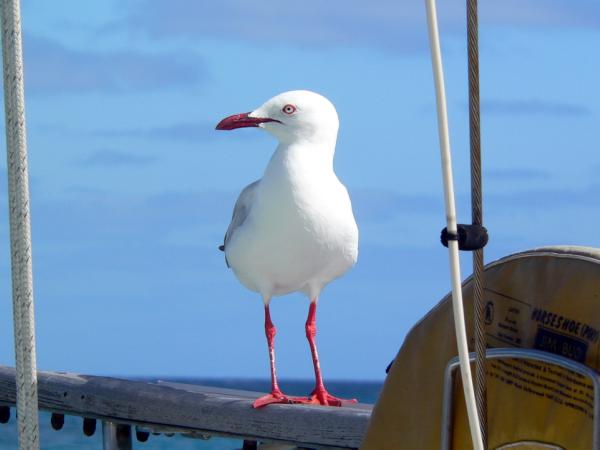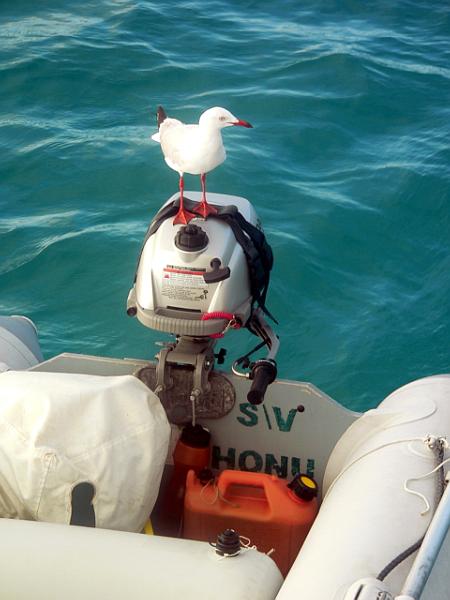Published in the Ocean Watch column, Honolulu Star-Advertiser © Susan Scott
November 23, 2007
While I lived at anchor off Lizard Island in Australia’s Great Barrier Reef National Park, two silver gulls often perched on my sailboat railings and dinghy motor.
From these elevated posts, the smallish birds could watch the bay’s activities and quickly fly to anything that might be edible.


One day, as I was rinsing the birds’ droppings off my outboard, a fellow boater said, “Those seagulls make a mess on my boat, too.”
“I don’t mind,” I said. “I enjoy watching their antics. We don’t have gulls in Hawaii.”
“Really?” the man said. “I thought gulls lived everywhere.”
Gulls are widespread and adaptable, but they do not do well on tropical islands. The silver gulls of New Caledonia and Australia are an exception. This petite species is one of only three gulls that nest in the tropics. The others are the Galapagos Islands’ lava and swallow-tailed gulls.
Biologists have several theories about why gulls do not breed in Hawaii and other tropical islands.
In their guide “Hawaii’s Birds,” the Hawaii Audubon Society explains that gulls lack the desalination gland of marine birds and must drink fresh water. (Update: not true see Dec. 7, 2007 column) Gulls, they say, are essentially continental birds, not seabirds.
The term seagull, therefore, is a misnomer. Birders and biologists call these birds gulls.
In explaining why Hawaii has no gulls, another Hawaii author writes that gulls are scavengers of shallow waters. Since the Hawaiian Islands are mostly mountaintops with no coastal shelf, they do not provide the kind of coastal food gulls prefer.
Another bird specialist reports in his book on Hawaii’s seabirds that gulls are primarily a Northern Hemisphere group, and few are truly oceanic. He speculates that gulls are unable to take advantage of Hawaii’s available food sources.
Although none of the world’s 47 gull species breed in Hawaii, several routinely get here, either propelled by storm winds, as hitchhikers on ships or under their own wing power. Some annual visiting gull species are laughing, ring-billed, glaucous-winged, herring, Bonaparte’s and Franklin’s gulls.
Hawaii’s limited mud flats and wetlands attract these lone wanderers, and they occasionally stay for months. Most, however, disappear after a few days, and none raise families here.
Gulls are often unloved because they poop, yell and scatter trash. But these smart birds have learned to live with a garbage-strewing, land-hogging, violence-loving species, and for that they deserve a Darwinian gold medal.
Or at least the Doritos lottery, which is what Sam the herring gull of Aberdeen Scotland must think he has won. A Texas reader sent me a video clip of Sam casing a convenience store. When the clerk goes behind the counter, the bird walks in the open door, grabs a bag of cheese Doritos and runs out with it.
You have to admire such brilliant bird behavior, and people do. The store’s customers are so impressed with Sam’s 20-some robberies, they’re paying for the lifted Doritos.
After sailing to New Caledonia, one of my crew members looked up the silver gulls we first spotted there. “What was the name of those gulls again?” I asked him later.
“Um, sterling, I think,” he said.
Close enough. To me, all gulls are sterling.
